I am trying to create a flask site, which can take a dataframe with data, insert them into an HTML file, which then gets converted into a PDF file as an output.
The solution works locally on my machine, but when deploying to azure app service i receive following error message:
OSError: No wkhtmltopdf executable found: ".\emazys_service\PDF_generation\wkhtmltopdf\bin\wkhtmltopdf.exe"
I have tried to change my service plan based on following recommendation, but without luck: Azure websites and wkhtmltopdf
source code:
PDF = Blueprint('PDF', __name__)
### Generate Dynamic PDF from Data
path_wkhtmltopdf = r'.\emazys_service\PDF_generation\wkhtmltopdf\bin\wkhtmltopdf.exe'
config = pdfkit.configuration(wkhtmltopdf=path_wkhtmltopdf)
@PDF.route('/PDF_form', methods = ['POST', 'GET'])
@login_required
def PDF_form():
if request.method == 'GET':
files = glob.glob(r".\emazys_service\test_csv\*.csv")
return render_template('/PDF_form.html', files = files)
if request.method == 'POST':
## Load the value, and output as HTML
file_requested = request.form.get('file')
csv_data = pd.read_csv(file_requested, sep="\t")
## Load the HTML Template
templateLoader = jinja2.FileSystemLoader(searchpath="./")
templateEnv = jinja2.Environment(loader=templateLoader)
TEMPLATE_FILE = "emazys_service/templates/pdf_template.html"
template = templateEnv.get_template(TEMPLATE_FILE)
outputText = template.render(df = csv_data)
html_file = open("test.html", 'w')
html_file.write(outputText)
html_file.close()
## Take the HTML file, and create to PDF
pdf = pdfkit.from_file("test.html", False, configuration=config)
response = make_response(pdf)
response.headers["Content-Type"] = "application/pdf"
response.headers["Content-Disposition"] = "inline; filename=output.pdf"
### DELETE THE HTML AFTERWARDS
if os.path.exists("test.html"):
os.remove("test.html")
else:
print("The file does not exist")
return response
PDF_form.html
{% extends "base.html" %}
{% block content %}
<h1>Create PDF by Clicking Submit! </h1>
<form action="/PDF_form" class="content" method = "POST" target="_blank">
<select name="file" method="GET" action="/">
{% for file in files %}
<option value="{{file}}" SELECTED>{{file}}</option>"
{% endfor %}
</select>
<p><input type = "submit" value = "Create PDF" /></p>
</form>
{% endblock %}
pdf_template.html
<head>
<style>
body {
font-family: 'Asap';
}
h2 {
font-size: 26px;
margin: 20px 0;
text-align: center;
small {
font-size: 0.5em;
}
}
td {
text-align: center;
}
#Tdesign {
border-collapse: collapse;
width: 100%;;
}
#Tdesign td, #Tdesign th {
border: 1px solid #ddd;
padding: 8px;
}
#Tdesign tr:nth-child(even){background-color: #f2f2f2;}
#Tdesign tr:hover {background-color: #ddd;}
#Tdesign th {
padding-top: 12px;
padding-bottom: 12px;
background-color: #353E45;
color: #E74011;
text-align: center;
}
</style>
</head>
<body>
<h1>String Test Data</h1>
<table id="Tdesign">
<tr>
{% for column in df.columns %}
<th>{{ column }}</th>
{% endfor %}
</tr>
{% for idx, row in df.iterrows() %}
<tr>
{% for colname in df.columns %}
<td>{{ row[colname] }}</td>
{% endfor %}
</tr>
{% endfor %}
</table>
</body>
forms.py:
class PDF_form(FlaskForm):
file = SelectField(u'Choose file', choices = [])
submit = SubmitField('Create PDF')
Directory overview
